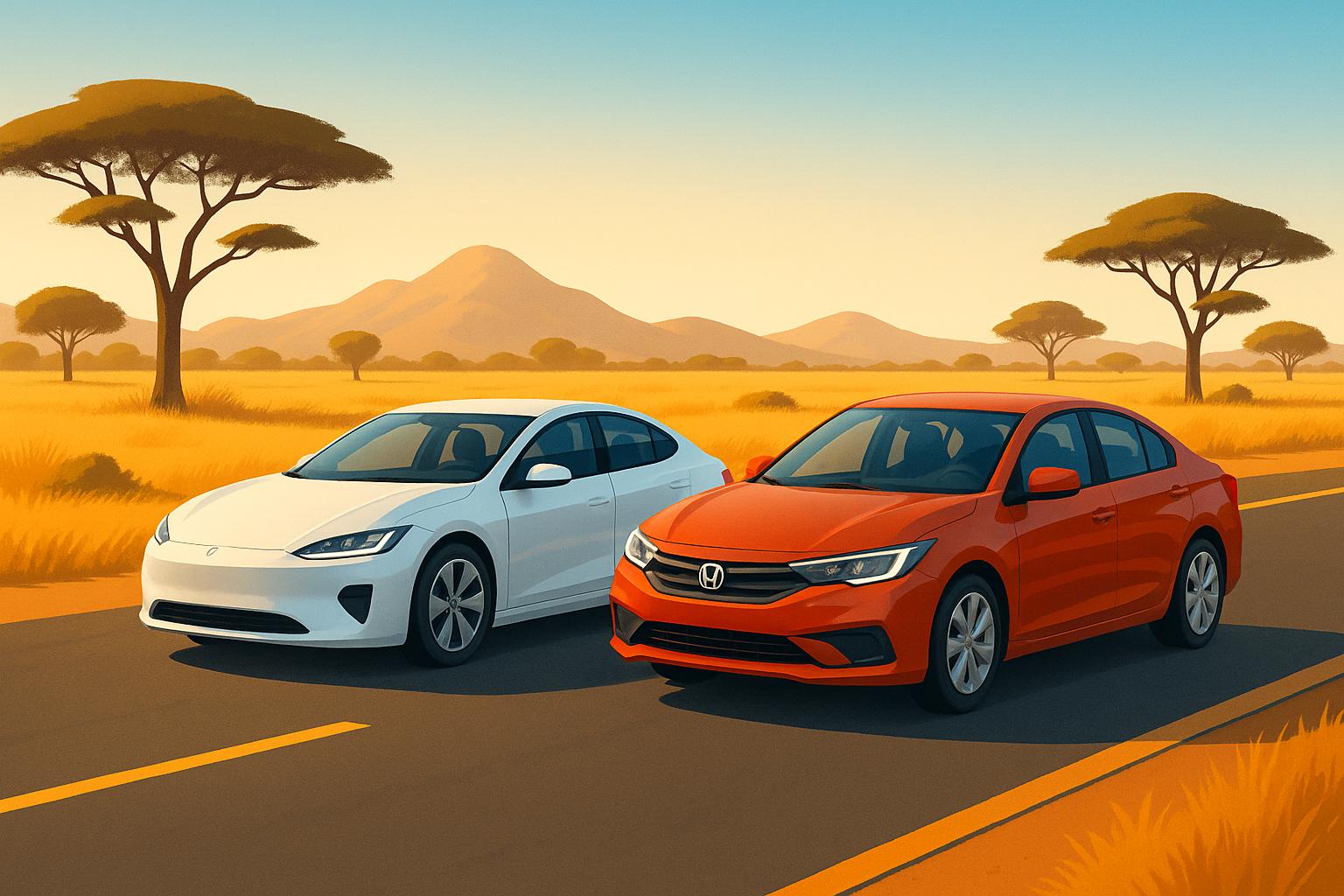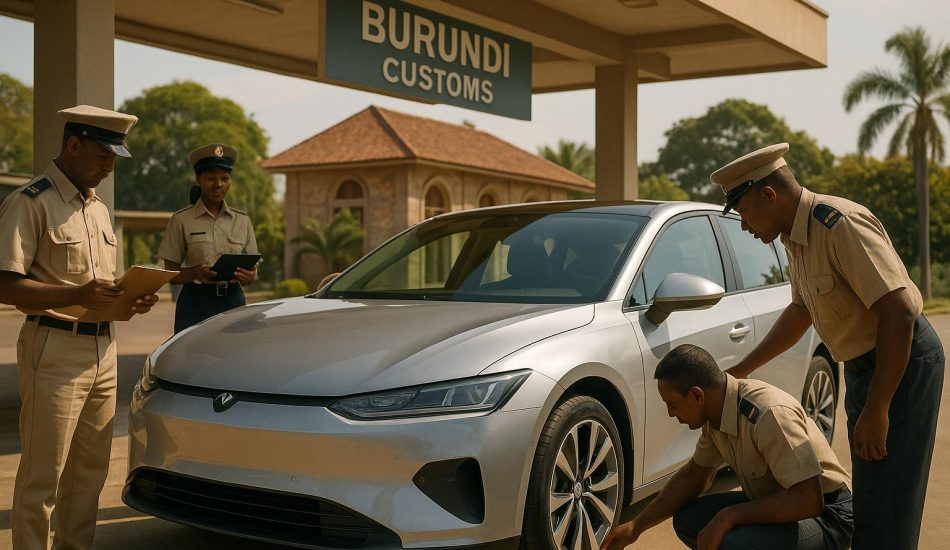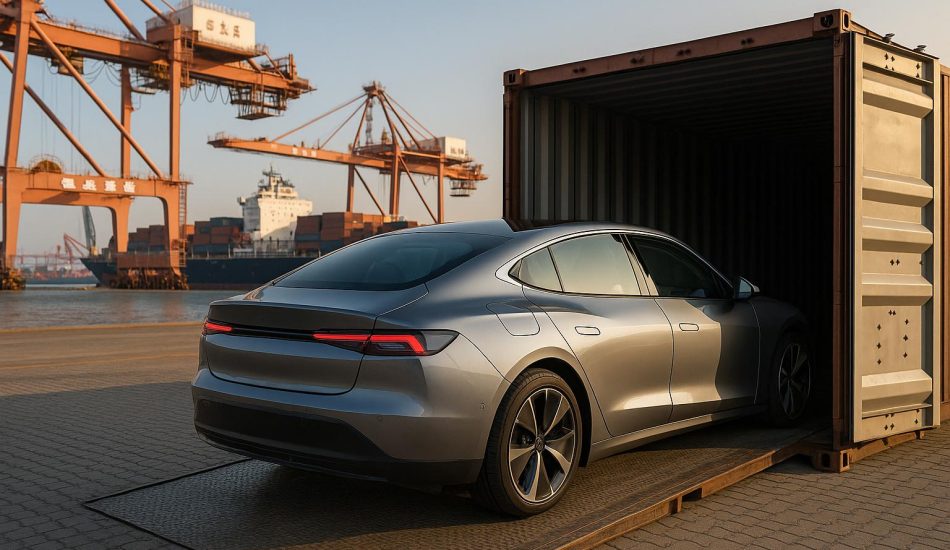
Electric and hybrid cars each have their strengths, but the best choice for African roads depends on factors like infrastructure, costs, and driving needs. Here’s a quick breakdown:
- Electric Cars (EVs): Best for urban areas with reliable electricity and growing charging networks. They have lower running costs and no tailpipe emissions, but require access to charging stations.
- Hybrid Cars: Ideal for regions with limited charging infrastructure or unreliable electricity. They combine gas engines with electric motors, offering flexibility and better fuel efficiency.
- Plug-In Hybrids (PHEVs): A middle ground, allowing electric driving for short trips and gas for longer distances. Useful in areas with partial charging access.
Quick Comparison
| Factor | Electric Vehicles (EVs) | Hybrid Vehicles | Plug-In Hybrids (PHEVs) |
|---|---|---|---|
| Best Use Case | Urban areas | Remote/long-distance | Mixed driving |
| Infrastructure | Needs charging stations | Relies on fuel | Requires both |
| Initial Cost | $4,800–$97,000 | Moderate | Moderate to high |
| Running Costs | Lowest with electricity | Balanced | Depends on charging |
Each option suits different needs: EVs work well in cities, hybrids are practical for rural areas or long trips, and PHEVs offer a flexible mix of both. Choose based on your location, budget, and driving habits.
Are electric vehicles actually selling in South Africa? EV and …
Electric and Hybrid Cars Explained
Understanding how electric and hybrid vehicles function is essential for choosing the right option for African roads. Let’s break down the basics of each type.
How Electric Cars Work
Electric vehicles (EVs) rely on batteries to store energy, which powers electric motors. These motors are highly efficient, converting about 90% of the energy into motion, compared to only 25% efficiency in traditional gas engines. The system includes a high-capacity lithium-ion battery pack, electric motors, and a power distribution controller.
One standout feature of EVs is their ability to deliver instant torque, providing quick power from a complete stop. This can be especially useful for tackling rugged terrain or steep hills, which are common in many parts of Africa. Additionally, EVs can recover energy through regenerative braking, helping to extend their driving range.
Next, let’s look at how hybrid vehicles use a combination of technologies to offer more flexibility.
How Hybrid Cars Work
Hybrid cars first hit the market with the 1997 Toyota Prius. These vehicles combine an internal combustion engine with an electric motor powered by a battery.
There are several types of hybrids, each designed for specific driving needs:
| Hybrid Type | Key Features | Best Use Case |
|---|---|---|
| Self-charging | Charges using the engine and braking | Ideal for city driving with stops |
| Mild Hybrid | Provides small electric assistance | Best for highway driving |
| Full Hybrid | Can operate on electricity at low speeds | Suitable for mixed driving conditions |
This dual-power setup helps cut fuel use and emissions, particularly in stop-and-go traffic, which is typical in many African cities.
Plug-In Hybrids: Combining Both Systems
Plug-in hybrid electric vehicles (PHEVs) take the benefits of hybrids a step further. They can travel between 25 and 55 miles on electricity alone. For example, the 2025 Toyota Prius Plug-In Hybrid comes with a 13.6-kWh battery, while the 2025 Mercedes-Benz GLE Plug-In Hybrid features a larger 23.3-kWh battery pack.
"PHEVs are excellent for drivers who wish to experience all-electric driving without the range limitations of an EV. If you can charge overnight, have a short commute, and your PHEV has enough all-electric driving range, you may be able to get by using just electric power for weekday driving." – U.S. News
These vehicles are a practical choice for African drivers. They allow you to use electric power when charging is available, but you can switch to gasoline for longer trips or in areas where charging stations are scarce. PHEVs support charging through standard outlets or dedicated stations, offering flexibility for various charging setups.
African Road Requirements
Charging Stations and Power Supply
Africa faces challenges with charging infrastructure for electric vehicles (EVs). Currently, only 17% of African countries have 10 or more public charging stations. This limited availability makes EV adoption difficult, especially in rural and less urbanized areas.
Some cities are introducing creative solutions like battery swap stations to address these issues. However, the overall charging network remains sparse compared to the widespread availability of traditional fuel stations.
| Infrastructure Element | Current Status | Impact on Vehicle Choice |
|---|---|---|
| Public Charging Stations | Limited to major cities | Encourages hybrids for long-distance travel |
| Grid Reliability | Inconsistent in many areas | Promotes hybrids with backup systems |
| Battery Swap Stations | Expanding in urban areas | Boosts adoption of electric motorcycles |
These gaps highlight the need to evaluate access to both fuel and electricity across Africa.
Access to Fuel vs. Electricity
While fuel distribution networks are well-established, electricity grids vary widely in coverage and reliability. Africa’s fuel network supports 26–38 million vehicles, but electricity access often depends on location and regional infrastructure.
"We want to reduce that down to two kilometers, so you’re really very close and have a sort of a similar density as you had to with petrol." – Felix Saro-Wiwa, Head of Growth at ARC Ride
This uneven energy availability directly influences the costs of owning and operating vehicles.
Purchase and Running Costs
Switching to EVs can lead to noticeable savings. For example, Thomas Omao in Nairobi saves about $4.50 daily in fuel costs compared to using a gasoline vehicle. He highlights the benefits:
"So the electric motorbikes, number one, the vast advantage that I can say is that they are very easy to ride compared to the other ones. Number two, it’s cost effective." – Thomas Omao
Battery swapping also helps reduce upfront costs. Godwin Ayetor explains how this works:
"Another problem it solves: The EV start-ups get to sell electric two-wheelers without selling the battery. This reduces the initial price of owning the electric two-wheeler. So people will not buy the batteries, they will buy the electric two-wheeler and rent the battery on regular basis. And so far it’s working very well."
In Africa’s diverse conditions, these cost factors play a key role in determining which vehicles are most practical.
| Cost Factor | Electric Vehicles | Hybrid Vehicles |
|---|---|---|
| Initial Purchase | Higher upfront cost | Moderate upfront cost |
| Operational Costs | Lower in areas with reliable electricity | Balanced between fuel and electricity |
| Maintenance | Fewer moving parts; specialized service | More complex systems; broader service access |
| Energy Costs | Varies by electricity rates | Depends on both fuel and electricity prices |
sbb-itb-99e19e3
Impact on Air Quality and Climate
Transportation in Africa plays a major role in air pollution and climate change. In countries like Ghana and Morocco, over 40% of energy-related emissions come from transportation.
Reducing Emissions in Africa
The emissions from vehicles vary significantly based on their type and energy source. For instance, internal combustion engine (ICE) buses emit 3.46 times more CO2 than electric buses powered by the grid, and an astonishing 329 times more when compared to electric buses charged with solar power.
| Vehicle Type | Emissions Reduction (vs ICE) | Energy Source |
|---|---|---|
| Electric Bus | 71% lower | National Grid |
| Electric Bus | 99.7% lower | Solar Power |
| Hybrid Bus | 47% lower | National Grid |
| Hybrid Bus | 81% lower | Solar Power |
Countries like Ethiopia, Uganda, the Democratic Republic of the Congo, and Namibia have the greatest potential for cutting emissions, thanks to their growing investments in renewable energy.
"The contribution of EVs to decarbonization is more complicated than just swapping them in for existing ICE vehicles, because their ultimate carbon footprint is determined by the source of their electricity and how they are manufactured." – Jay Taneja, June Lukuyu, Rebekah Shirley
In 2015, particulate matter and ozone from transportation were linked to nearly 4,500 deaths in Sub-Saharan Africa. Electric vehicles are far more efficient, operating at about 90% efficiency compared to 12–40% for traditional vehicles.
Battery Life and Recycling
While emissions are a major focus, the full environmental impact of electric and hybrid vehicles also depends on factors like battery lifespan and recycling. These considerations are especially critical as Africa transitions to electric mobility.
Different countries are approaching this transition based on their specific challenges and advantages:
| Country | EV Potential | Key Factors |
|---|---|---|
| Zimbabwe | High | Availability of renewables, urban air quality issues |
| Mozambique | High | Access to clean energy, air quality concerns |
| Tunisia | Low | Low transport emissions, carbon-heavy power grid |
| Senegal | Low | Limited air pollution, reliance on fossil-fueled electricity |
In 2018, Africa’s total energy-related emissions reached 1,215 Mt CO2. North African countries were responsible for 40% (490 Mt CO2), while South Africa accounted for 34% (420 Mt CO2).
As Sub-Saharan Africa continues its shift from fossil fuels to renewable energy sources, the adoption of electric and hybrid vehicles will play a key role in reducing emissions in both the transportation and energy sectors.
Making the Right Choice
Choosing between an electric vehicle (EV) or a hybrid depends on local infrastructure, costs, and specific needs. Across Africa, these factors vary widely, influencing which option works best. Let’s break down when each type of vehicle makes sense.
When to Choose Hybrid Cars
Hybrid cars are a practical option for areas where charging infrastructure is limited or unreliable. Here’s how they stand out:
| Scenario | Benefits | Considerations |
|---|---|---|
| Remote Areas | Flexible fuel options, longer range | Lower fuel costs than traditional cars |
| Unreliable Grid | Operates during outages | Less reliance on charging |
| Long-Distance Travel | No need to worry about charging | Improved fuel efficiency |
| Limited Infrastructure | Easy access to fuel stations | Reduced maintenance costs |
In countries like Uganda and Rwanda, where charging networks are sparse, hybrids strike a balance. They lower emissions while working with the infrastructure already in place.
When to Choose Electric Cars
Electric cars shine in urban areas with growing infrastructure and renewable energy resources. Zimbabwe and Mozambique, for example, are seeing strong potential for EVs due to renewable energy access and concerns about urban air quality.
The financial case for EVs can also be compelling. In Ghana, studies suggest EVs can match the cost of traditional vehicles under certain conditions:
- Eliminating the 20% import duty
- Lowering financing interest rates from 23% to 10%
- Combining both measures to achieve cost parity starting in the first year
For those looking for a middle ground, plug-in hybrids offer a mix of electric and hybrid benefits.
Using Plug-In Hybrids to Start
Plug-in hybrids (PHEVs) are a great starting point for African drivers. They combine the strengths of both electric and hybrid systems while reducing their downsides.
In commercial settings, innovative solutions are emerging. For instance, in Nairobi, motorcycle taxi riders are cutting costs with electric motorbikes and battery-swapping services. Thomas Omao, a motorcycle taxi rider, shared that he saves about 60% on fuel costs by paying a flat rate of $3.00 per day for unlimited battery swaps.
Battery swapping is helping to tackle range anxiety and upfront costs for two-wheelers. Companies like ARC Ride are working to make charging more accessible, aiming to place charging stations within two kilometers of each other.
Conclusion: Best Options for Your Needs
Each vehicle type serves Africa’s varied driving conditions differently, and the best choice depends on your location, driving habits, and budget. Here’s a breakdown:
Electric vehicles shine in urban areas with growing charging networks. Prices range from $4,800 to $97,000, making them an option for city dwellers. However, with limited charging stations and inconsistent grid reliability, hybrids and plug-in hybrids often make more sense for many scenarios. Hybrids are ideal for remote regions and long trips, while plug-in hybrids combine electric driving for city use with an engine backup for extended travel.
Key Comparisons
| Factor | Electric Vehicle | Hybrid Vehicle | Plug-in Hybrid |
|---|---|---|---|
| Best Use Case | Urban areas with steady power | Remote areas, long-distance travel | Mixed urban and rural driving |
| Infrastructure | Requires charging stations nearby | Relies on regular fuel stations | Needs both, less dependent on charging |
| Initial Cost | $4,800 – $97,000 | Varies | Varies |
| Running Costs | Lowest with stable electricity | Depends on fuel prices | Depends on charging access |
Africa’s electric vehicle market is growing fast. With expanding charging networks and new models entering the scene, electric vehicles are becoming a more realistic choice across the continent. As energy infrastructure improves, these decisions will continue to evolve.
FAQs
What should African drivers consider when deciding between electric and hybrid cars?
When deciding between electric vehicles (EVs) and hybrid cars for African roads, it’s essential to consider infrastructure, costs, energy and fuel availability, and environmental impact. EVs rely on charging stations, which may be limited in many areas, while hybrids offer more flexibility by combining fuel and electric power.
Affordability is another key factor. While EVs are generally more expensive upfront, they can save on long-term energy costs if charging options are accessible. Hybrids, on the other hand, might be more practical for regions where fuel is more readily available than charging infrastructure.
Finally, think about sustainability. EVs produce zero tailpipe emissions, making them more eco-friendly, but their impact depends on how electricity is generated locally. Hybrids are a step toward reducing emissions but still rely on fossil fuels. Carefully weigh these factors to choose the vehicle that best suits your region and driving needs.
How does Africa’s infrastructure affect the use of electric vehicles?
Africa’s current infrastructure poses significant challenges for electric vehicle (EV) adoption. Many regions face a limited number of charging stations, and frequent power outages in some areas make reliable charging difficult. These factors can limit the practicality of EVs for daily use.
However, progress is being made in certain countries, such as South Africa, where charging networks are more developed. The availability of electricity on national grids also varies widely across the continent, further influencing how feasible EVs are in different regions. While infrastructure limitations remain a hurdle, efforts to expand charging networks and improve energy reliability are ongoing, offering hope for broader EV adoption in the future.
What are the environmental advantages of choosing electric or hybrid vehicles over traditional gas-powered cars in Africa?
Electric vehicles (EVs) and hybrid cars offer significant environmental benefits compared to traditional gas-powered vehicles. EVs produce zero tailpipe emissions, helping to improve air quality in urban areas. When charged using renewable energy sources like solar, their overall carbon footprint is drastically reduced, making them an eco-friendly choice.
Hybrid vehicles, while still relying partially on gasoline, are more fuel-efficient and emit fewer greenhouse gases than internal combustion engine vehicles (ICEVs). For instance, replacing traditional buses with electric ones can cut emissions by over three times, and this difference becomes even greater if renewable energy is used for charging.
By adopting EVs and hybrids, African drivers can contribute to cleaner cities and a more sustainable future, especially as renewable energy infrastructure continues to expand across the continent.




